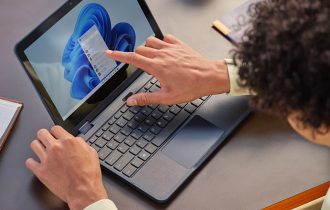Hybrid Learning: The Best of Both Worlds

In an era where digital transformation permeates every aspect of our lives, education has not been left behind. The rise of hybrid learning stands testament to this transition. A fusion of traditional face-to-face instruction and online learning, hybrid learning provides the best of both worlds. As Bill Gates once stated, “Technology is just a tool. In terms of getting the kids working together and motivating them, the teacher is the most important.”
Understanding Hybrid Learning
Hybrid learning represents an amalgamation of traditional classroom learning and online digital instruction. This blended approach allows for a more flexible, personalized, and student-centered learning experience. Hybrid learning combines the human touch and socialization aspects of a traditional classroom with the flexibility and technological advantages of online education.
Consider the example of the K-12 school district in Los Angeles, California. When the pandemic hit, schools quickly transitioned to a hybrid learning model. Students split their time between in-person learning at school and online learning at home. This model not only allowed for continued education during a difficult time but also presented an opportunity to explore a more flexible and accommodating learning approach.
The Power of Technology in Hybrid Learning
The seamless integration of technology is what makes hybrid learning possible. Digital tools, such as learning management systems (LMS), video conferencing software, and virtual reality (VR), provide interactive and engaging platforms for instruction and learning.
For example, Google Classroom, a popular LMS, helps in assigning and tracking homework, facilitating communication between teachers and students, and providing a platform for collaborative projects. Similarly, VR technologies are being used to create immersive learning experiences, from virtual field trips to interactive science experiments.
As education technology entrepreneur David Anderson puts it, “Technology in education is the biggest change in teaching we will ever see.” The advent of new technologies has led to an evolution in teaching methodologies and has made hybrid learning an achievable reality.
Overcoming Challenges in Hybrid Learning
While the benefits of hybrid learning are plentiful, it doesn’t come without its challenges. These can range from ensuring equal access to technology and internet connectivity for all students, to training teachers for the digital aspects of teaching and maintaining student engagement in an online environment.
To combat these challenges, schools and educational institutions are developing strategies such as providing devices to students, offering professional development programs for teachers, and utilizing engaging and interactive tools to maintain student interest and participation.
Despite these hurdles, the overall response to hybrid learning has been overwhelmingly positive. It has demonstrated the potential to cater to diverse learning styles, provide flexibility, and offer a more personalized approach to education.
Embracing the Future of Education
As we look towards the future, it’s clear that hybrid learning is more than just a passing trend – it’s an educational revolution. As former U.S. Secretary of Education, Arne Duncan, stated, “Education is the key to the future. You’ve heard it a million times, and it’s not wrong. Educated people have higher wages and lower unemployment rates, and better-educated countries grow faster and innovate more than other countries.”
In an increasingly digital world, it’s imperative to equip students with the skills they need to navigate this landscape. Hybrid learning, with its blend of traditional and digital methods, does just that. It offers a dynamic, engaging, and effective approach to education that prepares students for a world where lifelong learning and adaptability are key.
In conclusion, hybrid learning, with its balance of face-to-face and online instruction, offers the best of both worlds. It captures the essence of traditional teaching while embracing the advantages of digital education. By addressing its challenges and leveraging its benefits, hybrid learning can pave the way for a more accessible, flexible, and personalized educational future.


